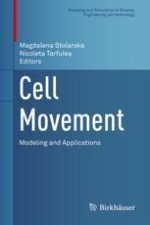2018 | OriginalPaper | Buchkapitel
A Multiscale Model of Cell Migration in Three-Dimensional Extracellular Matrix
verfasst von : Xiuxiu He, Yi Jiang
Erschienen in: Cell Movement
Aktivieren Sie unsere intelligente Suche, um passende Fachinhalte oder Patente zu finden.
Wählen Sie Textabschnitte aus um mit Künstlicher Intelligenz passenden Patente zu finden. powered by
Markieren Sie Textabschnitte, um KI-gestützt weitere passende Inhalte zu finden. powered by
